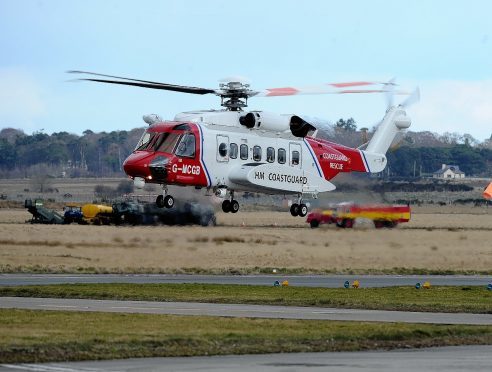Inverness’s fledgling search and rescue helicopter base had the highest number of missions of all 11 UK civilian bases in its first year of operation.
The city air base responded to 303 call-outs, 36 of those in its single busiest month of July.
Nationwide, the civilian bases had a total of 1,680 missions throughout 2015-16.
Rescue and recovery missions were the most common tasking category UK-wide, except for Lee-on-Solent in Hampshire and Lydd in Kent where a combination of pre-arranged transfers and searches were more common.
Taskings UK-wide were predominantly land-based.
During the year to the end of March, civilian search and rescue helicopters spent 3,416 hours on missions.
Inverness crews recorded the highest of 771 hours.
Sumburgh and Stornoway were Scotland’s next busiest civilian search and rescue bases, with 141 and 127 call-outs, respectively.
Tasks involving mountainous terrain such as the Nevis Range proved more prolonged than other missions.
Vast mountain ranges and strong winds and late-lying snow on higher ground add to the many challenges experienced by the Dalcross crews.
The Department for Transport statistics showed that all stations were at their busiest at weekends, with 356 call-outs on Saturday and 271 on Sundays compared with a weekday average of 211.
The Inverness base, which became operational on April 1 last year, is operated by Bristow Helicopters Ltd on behalf of the Coastguard and was the first of several new facilities introduced across the UK.
Bristows was awarded a 10-year contract by the UK Government in 2013.
The Highland base is led by Invernessian chief pilot Captain John McIntyre who began his career flying fixed wing aircraft from his home city’s airport after being awarded a flying scholarship through the Air Training Corp.
He has since flown oil, gas and military support missions in Europe, Africa and the Falkland Islands as well as SAR operations and crew training in the UK, Holland and Libya.
